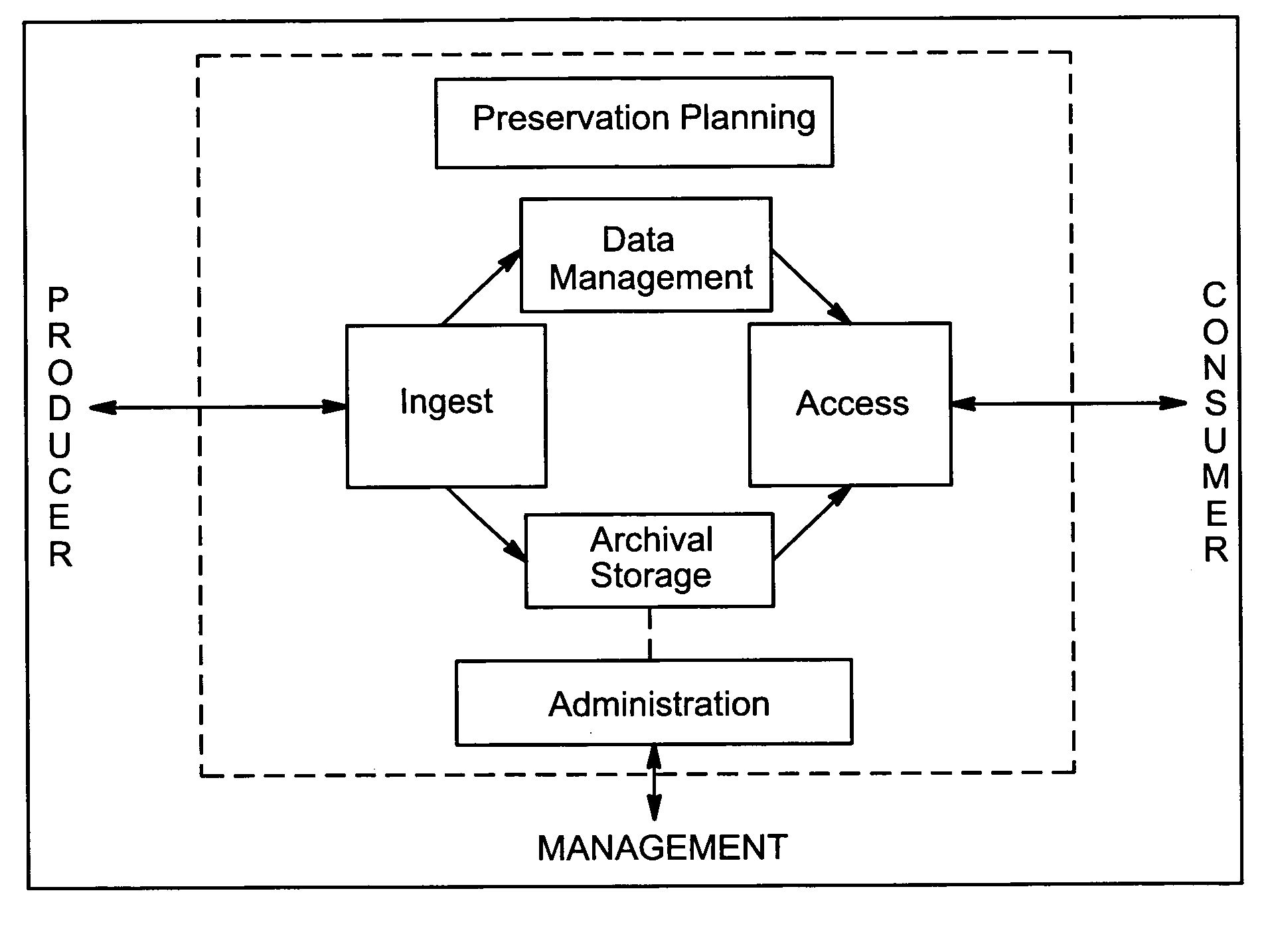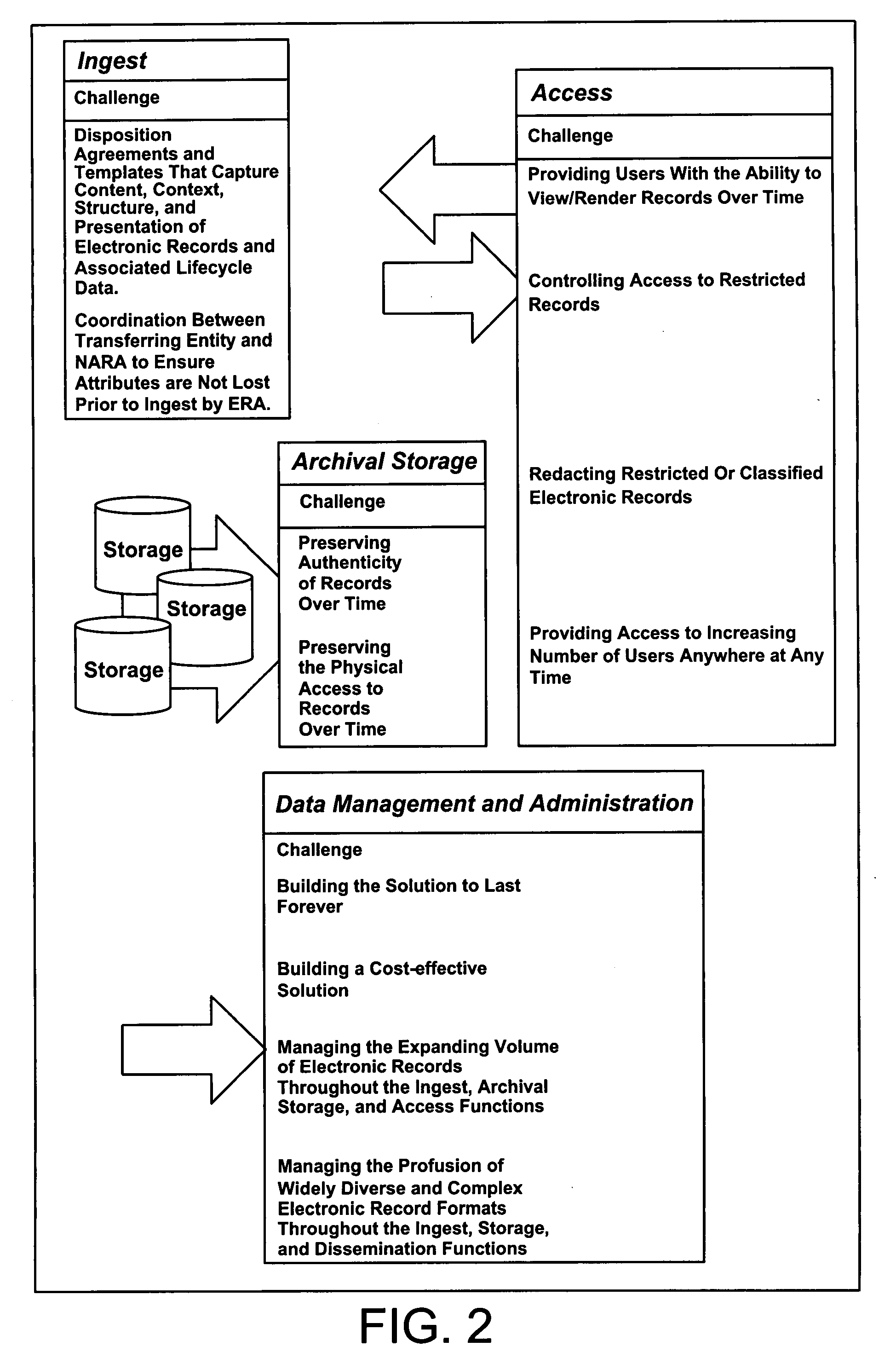System and method for immutably cataloging electronic assets in a large-scale computer system
a computer system and large-scale technology, applied in the field of asset catalog, can solve the problems of increasing reducing the flexibility of reducing the risk of loss, so as to achieve the effect of large-scale computer storage system, extreme scalability and flexibility, and maintaining asset storage and retrieval flexibility
- Summary
- Abstract
- Description
- Claims
- Application Information
AI Technical Summary
Benefits of technology
Problems solved by technology
Method used
Image
Examples
Embodiment Construction
[0096]The following description includes several examples and / or embodiments of computer-driven systems and / or methods for carrying out automated information storage, processing and / or access. In particular, the examples and embodiments are focused on systems and / or methods oriented specifically for use with the U.S. National Archives and Records Administration (NARA). However, it will be recognized that, while one or more portions of the present specification may be limited in application to NARA's specific requirements, most if not all of the described systems and / or methods have broader application. For example, the implementations described for storage, processing, and / or access to information (also sometimes referred to as ingest, storage, and dissemination) can also apply to any institution that requires and / or desires automated archiving and / or preservation of its information, e.g., documents, email, corporate IP / knowledge, etc. The term “institution” includes at least govern...
PUM
 Login to View More
Login to View More Abstract
Description
Claims
Application Information
 Login to View More
Login to View More - R&D
- Intellectual Property
- Life Sciences
- Materials
- Tech Scout
- Unparalleled Data Quality
- Higher Quality Content
- 60% Fewer Hallucinations
Browse by: Latest US Patents, China's latest patents, Technical Efficacy Thesaurus, Application Domain, Technology Topic, Popular Technical Reports.
© 2025 PatSnap. All rights reserved.Legal|Privacy policy|Modern Slavery Act Transparency Statement|Sitemap|About US| Contact US: help@patsnap.com



